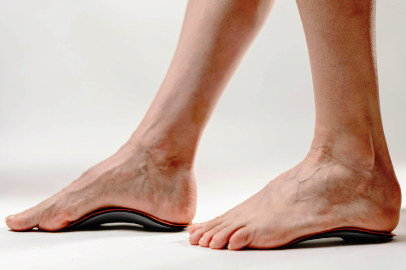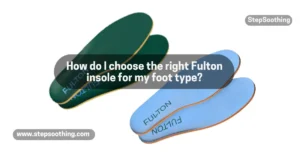For individuals with flat feet, daily activities like standing for long hours, walking, or even light exercise can lead to persistent foot pain, fatigue, and joint discomfort. Without proper arch support, flat feet can contribute to overpronation, knee pain, hip misalignment, and even lower back issues. Over time, the lack of adequate support may cause chronic strain and reduced mobility.
Many turn to flat feet insoles as a potential solution, but an important question remains: Are they comfortable enough for all-day wear? While insoles are designed to correct alignment, provide cushioning, and reduce strain, their effectiveness depends on the type, material, and fit. Poorly chosen insoles can cause discomfort rather than relief.
This article examines how flat feet insoles work, their benefits and limitations, and expert recommendations for choosing the right pair. Understanding these factors can help individuals determine whether insoles are a practical long-term solution for enhancing comfort, reducing pain, and improving overall foot health.
Do Flat Feet Insoles Work? Benefits & Expert Tips

Understanding Flat Feet and Associated Challenges
Definition and Causes of Flat Feet
Flat feet occur when the arches of the feet collapse, causing the entire sole to make contact with the ground. This condition can be:
- Congenital – Present from birth due to hereditary factors.
- Acquired – Developing later in life due to aging, obesity, injury, or muscle weakness.
According to the American Podiatric Medical Association (APMA), approximately 20-30% of the population has some form of flat feet, with many experiencing discomfort due to improper support.
Common Issues Associated with Flat Feet
Flat feet can lead to various complications, including:
- Foot Pain & Fatigue – Increased strain on foot muscles and ligaments.
- Overpronation – Excessive inward rolling of the foot, leading to misalignment of the lower body.
- Plantar Fasciitis –– Inflammation of the plantar fascia, a common source of heel pain. Learn more about how orthotics help with plantar fasciitis.
- Postural Issues – Flat feet can contribute to knee, hip, and lower back pain due to improper weight distribution.
The Role of Insoles in Flat Feet Management
Research published in the Journal of Foot and Ankle Research (2020) suggests that properly designed insoles can significantly reduce foot discomfort and improve biomechanical alignment in individuals with flat feet.
These insoles provide:
✔️ Arch Support – Preventing excessive foot collapse.
✔️ Pressure Redistribution – Minimizing strain on high-impact areas.
✔️ Improved Stability – Enhancing overall posture and balance.
How Flat Feet Insoles Work

Biomechanics of Support
Flat feet insoles function by:
- Enhancing Arch Support – Encouraging proper foot alignment.
- Distributing Weight Evenly – Reducing excessive pressure on the heel and forefoot.
- Promoting Joint Alignment – Minimizing stress on the ankles, knees, and hips.
If you’re wondering how to know if you need custom orthotics, certain signs like persistent pain, posture issues, and foot misalignment may indicate the need for professional evaluation.
Types of Flat Feet Insoles
- Rigid Orthotics – Provide firm control over foot motion and overpronation.
- Cushioned Insoles – Offer additional comfort while maintaining support.
- Custom Orthotics – Specifically designed based on individual foot structure.
- Over-the-Counter (OTC) Insoles – Generic solutions with moderate support.
For a broader guide, check out this comprehensive resource on orthotic insoles and shoe inserts.
Material Considerations
- EVA Foam – Lightweight and shock-absorbing.
- Memory Foam – Molds to the foot for personalized support.
- Gel Inserts – Provide additional cushioning and impact absorption.
- Carbon Fiber – Ensures durability and rigid arch support.
A study from The Journal of Applied Biomechanics (2021) found that individuals using custom orthotics reported a 27% reduction in foot pain compared to those using standard shoe inserts.
Comfort Factors of Flat Feet Insoles for All-Day Wear

Shock Absorption & Pressure Relief
High-quality insoles reduce foot strain by absorbing impact, which is crucial for individuals who spend long hours standing or walking.
Breathability & Moisture Control
Materials such as perforated foam and antimicrobial fabric prevent excessive moisture buildup, reducing the risk of odor and bacterial growth.
Flexibility & Adaptability
Certain insoles are designed to fit a variety of shoe types, ensuring consistent support regardless of footwear. However, it’s important to consider the compatibility of orthotics with different shoes before making a purchase.
Durability & Long-Term Comfort
Research indicates that high-quality insoles can maintain structural integrity for 6 to 12 months, whereas lower-quality insoles degrade more quickly, reducing their effectiveness over time.
Common Discomforts & Adaptation Period

Breaking-In Period
Podiatrists recommend a gradual adaptation phase, where individuals wear new insoles for 2-3 hours a day initially, before transitioning to full-time use.
Potential Pressure Points
Improperly fitted insoles may cause discomfort by exerting pressure on specific areas of the foot. Ensuring the correct size and arch height is essential for comfort.
When Insoles May Not Be Effective
- Severe Cases of Flat Feet – Some individuals may require custom-molded orthotics prescribed by a podiatrist.
- Chronic Pain Issues – Persistent discomfort should be evaluated by a medical professional.
Best Flat Feet Insoles for Extended Wear

Comparison of Leading Brands
| Brand | Best For | Key Features |
| Superfeet Green | High arch support, firm control | High-density foam, deep heel cup |
| PowerStep Pinnacle | Overpronation, daily comfort | Dual-layer cushioning, EVA base |
| WalkHero Comfort | Budget-friendly option | Gel cushioning, reinforced arch support |
| Dr. Scholl’s Custom Fit | Personalized fit | Foot-mapping technology |
Custom Orthotics vs. Prefabricated Insoles
| Factor | Custom Orthotics | Off-the-Shelf Insoles |
| Cost | $200–$600 | $20–$80 |
| Fit | Tailored to foot structure | Generic fit |
| Effectiveness | High for severe cases | Moderate for mild issues |
A 2022 review in the Journal of Orthopedic Science concluded that custom orthotics provide superior long-term pain relief and alignment correction compared to prefabricated insoles.
Maximizing Comfort & Effectiveness
Pairing Insoles with Proper Footwear
Experts from the American Academy of Orthopedic Surgeons (AAOS) recommend wearing insoles with shoes that provide:
✔️ Deep Heel Cups – To stabilize the foot.
✔️ Firm Arch Support – To prevent excessive pronation.
✔️ Shock-Absorbing Soles – To minimize impact stress.
Maintenance and Replacement Tips
- Replace Insoles Every 6-12 Months – Depending on usage and wear.
- Keep Insoles Dry & Clean – To prevent odor and bacterial buildup.
Recommended Foot Strengthening Exercises
- Toe Curls – Strengthens intrinsic foot muscles.
- Heel Raises – Improves foot and ankle stability.
- Rolling a Tennis Ball Underfoot – Relieves plantar fascia tension.
Final words about Are flat feet insoles comfortable for all-day wear
Flat feet insoles can be comfortable for all-day wear when properly fitted and paired with supportive footwear. While some individuals may experience an initial adjustment period, high-quality insoles can significantly enhance comfort and reduce fatigue.
Expert Recommendations:
✔️ Select insoles based on arch height and foot structure.
✔️ Allow a break-in period for optimal adaptation.
✔️ Pair insoles with supportive, well-fitted shoes.
Scientific studies and expert opinions indicate that insoles can effectively alleviate discomfort associated with flat feet, provided they are chosen based on individual needs and used consistently.
People Also Asked About Flat Feet Insoles
How long does it take to adjust to flat feet insoles?
Most individuals require one to two weeks to fully adapt. A gradual break-in period, wearing them for a few hours a day initially, can help minimize discomfort.
Can flat feet insoles be worn in any type of shoes?
While many insoles fit casual shoes, sneakers, and work footwear, some may not be compatible with narrow or high-heeled shoes. It is recommended to check the insole size and flexibility before purchasing.
Do flat feet insoles permanently correct arch collapse?
No, insoles do not permanently fix flat feet, but they provide support, pain relief, and improved alignment to prevent further strain and discomfort.
How often should flat feet insoles be replaced?
Insoles typically last between 6 to 12 months, depending on usage and material quality. High-impact activities like running may require more frequent replacements.
Are custom orthotics better than off-the-shelf flat feet insoles?
Custom orthotics offer personalized support and correction for severe flat feet conditions, whereas off-the-shelf insoles are more affordable and work well for mild to moderate cases.



